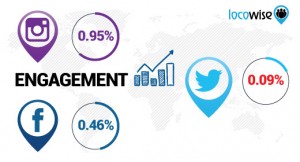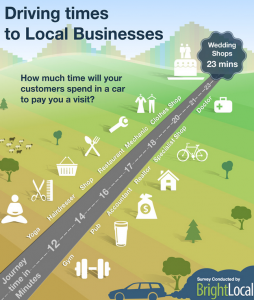
Experienced product marketers know that to have a great product launch sales teams need to be armed with effective sales training, messaging and sales tools. Whether it’s a major launch or a minor release with a few new features, before you go to market you need to at the very least update your sales reps with new messaging and positioning and review your content and tools to make sure outdated information is replaced in the context of the change in your offering.
To plan your upcoming product launch, here are tips on creating the best content for your sales team:
Internal FAQs
Many sales reps appreciate a list of product launch frequently asked questions and corresponding responses. It’s a quick read that’s used internally for refreshing their memories on launch details and is not designed to be shared with buyers. Typical questions and information include a brief description of the new product/feature, pricing details, key messaging and differentiators, information on launch promotion plans and links to relevant resources. The PR and customer support team also find the FAQs useful to prepare their parts of the launch.
Persona profiles
If you haven’t yet created persona profiles, check out Hubspot’s template for developing buyer personas from scratch.
If you have been using buyer personas, add any new personas related to your new offering. For existing personas, does the product and/or its new features affect the prospect’s buying decisions? Does your new offering help the buyer solve a business problem or help achieve a business goal? Once you’ve added this new information to your persona profiles your team can use the profiles as the foundation for new messaging and sales tools.
Critical content for sales conversations
The demand generation content created by marketing to support your product launch will be useful to your sales reps, but they’ll need additional sales content to help them succeed and add value during their sales conversations. Here are 5 sales content elements that you should provide for each of your buyer personas and revisit or update with each new product offering.
- Key Messages – to best position the company’s unique value propositions. These statements can be used in sales calls, meetings and email exchanges. They describe your solution’s key capabilities and associated benefits for your buyer personas. They must include your unique business value.
- Insights – to help the buyer answer their own questions and issues around their related business problems. Examples of good insights are research, statistics and trends on the consequences and magnitude of the business problem, what other companies in their industry are doing to solve similar problems, and the financial benefits of taking action.
- Questions – that sales reps should ask the buyer, relevant to the buyer’s challenges. Great questions not only show the sales rep’s expertise in the buyer’s industry and business segment, but also reveal the buyer’s motivation to buy.
- Competitive positioning – to show your offering’s unique advantages and benefits that are significant to the buyer persona, as compared to the alternatives. These statements should focus on how your offering solves business problems and should not get into a feature-by-feature comparison versus the competition.
- Objections – typically asked by the buyer and the best responses for overcoming those objections.
Sales tools
To engage the buyer during sales conversations and progress to winning the business, reps need supporting tools for each stage of the buyer’s journey. Here are important content assets to consider for your product launch:
- Thought leadership pieces: For demand generation as well as for sales reps to share during their conversations at the early stage of the buying cycle, provide thought leadership relevant to the business challenge that your offering addresses. This content could take many forms – ebook, video, blog, webinar. A major product release might warrant the creation of brand new content, while updates or feature enhancements might just require some editing of existing pieces. Ideally you’ll create multiple versions, repurposing core content and then targeting it for each of your buyer personas.
- Email templates: To make it easy for reps to prospect and to keep nurturing conversations with existing leads, provide email templates for each persona at different stages of the sales cycle with calls to action relevant to the product launch.
- PowerPoint slides: If this is a minor launch that doesn’t require drastic messaging changes, make sure current presentations are updated to reflect new features and benefits. If this is a major launch, create persuasive presentations that tell a story focusing on the challenges of the buyer and how they can meet their business goals with your new offering. Develop different versions of your presentation to match the challenges and goals of each buyer persona. Include a script and talking points for your reps.
For inspiration on using storytelling to really engage audiences with your presentations, learn from presentation expert Nancy Duarte in these videos.
- Customer quotes, testimonials, case studies: These assets are very valuable but notoriously difficult to source and develop by the time of the launch. For your most important launches, make it a goal to get a customer quote as part of your beta program. Conducting surveys as part of the beta program may be a good way to get positive feedback and statements that you can incorporate into sales tools and marketing messages.
- Analyst quotes: Work with your PR team to schedule briefings with analysts and identify opportunities to get quotes from respected industry analysts. You may want quotes from respected analyst and thought leaders relevant to each of your most important buyer personas.
- ROI and value calculators: Help your sales team reinforce the value message with tangible examples and numbers. The more you can customize the value calculator, the better, because different personas will focus on different variables.
- Proposal documents: Make sure that your sales reps have updated information that reflect your new offering in any documents they present prior to the contract phase. Also review and update your standard RFP responses and contract language prior to launch to prevent any delays or confusion during the last stages of the buying cycle.
Sales training material
Once you’ve created and/or updated your sales tools and you’re ready to release, how do you make sure you distribute them in the most effective way possible? Out of all the messages and information that the sales reps receive every day, how do you make sure they’ll pay attention and prepare for this product launch? It’s not enough to send an email with links to the new material. You’ll need to show sales reps how and when to use these tools, and how the tools can help them sell more and faster.
An engaging way to prepare reps for the launch is to create a video showing new the features and benefits of the new offering. Video makes the product really come to life and will help busy reps digest and remember the most important information. Product managers, product marketing managers and subject matter experts are all great candidates for narrating the video. Aside from demoing the features, the script should include talking points on how they benefit each of the target markets. You could also edit and repurpose the videos to share with PR and customer support teams, or even include them on your marketing websites as part of launch promotion.
An online meeting/webinar with your sales team is a great way to prepare them for a launch. Go over the main points discussed in your FAQ and tools, and make it interactive so you can take questions from reps. Record the webinar so it can be viewed by sales reps who couldn’t attend and add it to your sales content library so reps can refresh their knowledge.
For major product releases, review any training material used for new hires and update with content on your new offering, if needed.
The 7 attributes also apply to product launch materials
By the time you’re ready for launch, you will have put a lot of effort in creating all this valuable content. To make sure that it is being “consumed” as much as possible, use the 7 attributes of effective sales content as your guide while creating each piece.
A final note: before your next product launch consider making a content asset management improvement. Does your current CMS meet your content organization and delivery needs? Is your content creation, storage and delivery process as streamlined and efficient as possible? Are you tagging your sales content to make it easy to recall and update as needed? Adding product version and feature tags to your content will make the next product launch easier because you can filter by tags and quickly find the content that needs updating – instead of having to review all your content for potential outdated information.
(87)








